The Best Recipe for Chinese Pork Bun (Bao Zi)
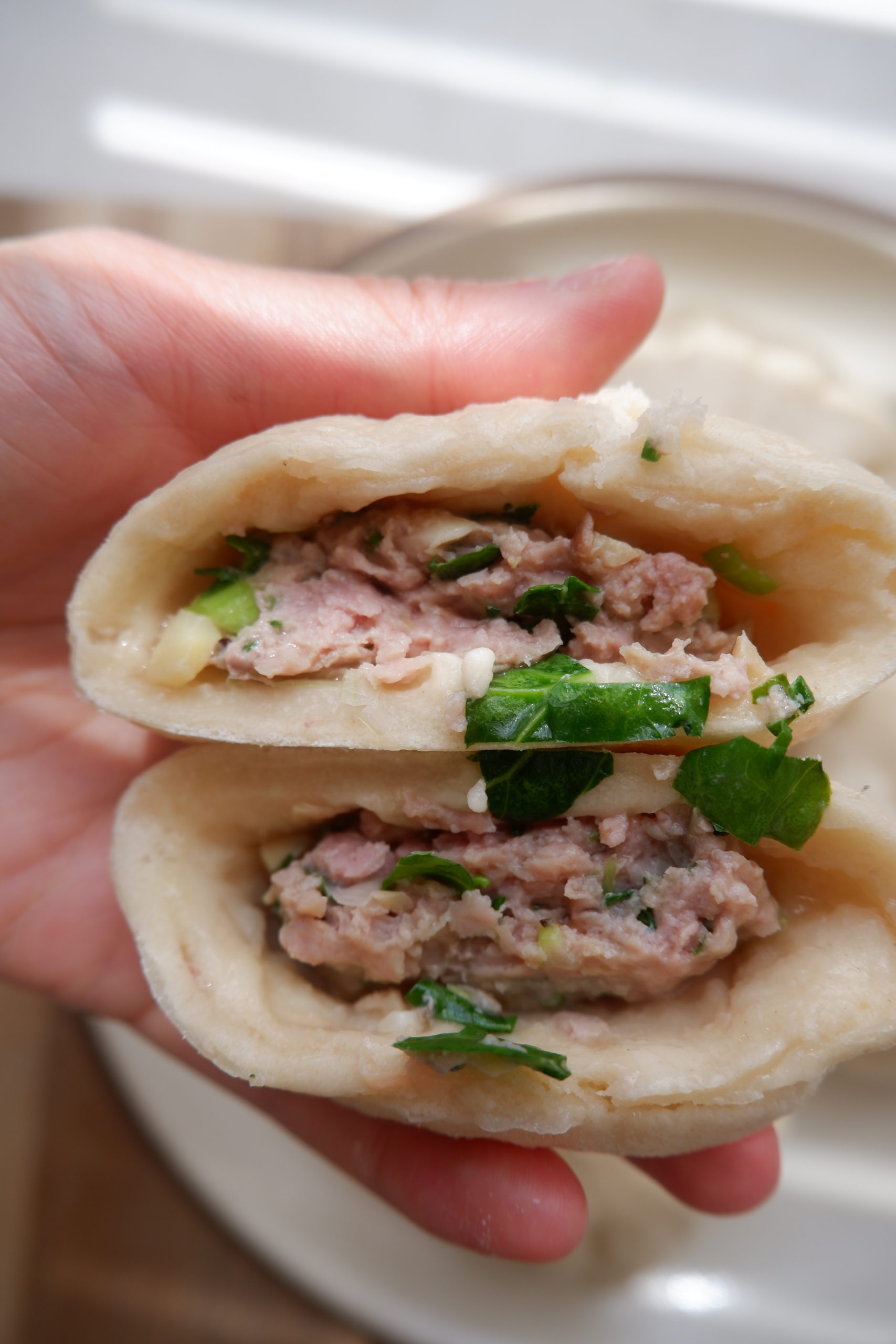
By Meng Wang, GSDA Diversity Chair
Bao zi (包子) are a quintessential Chinese staple that are eaten all over the country as a snack or main dish. They originate from Northern China and date back to as early as the Three Kingdoms time period almost 2,000 years ago. Generations of my family are from Northern China; I was born in and spent some of my childhood in Beijing. In this area, the cuisine consists of all kinds of baos and noodles because wheat rather than rice is more commonly grown in the region. I grew up eating so many variations of these little pockets of joy and have many memories around it, like my grandma and parents asking me what shape and filling I wanted that day, or always seeing that white mound of dough proofing somewhere on the kitchen counter. The most typical fillings are meat such as pork, beef or lamb. They can also be sweet; common sweet fillings are red bean or lotus seed paste. When made right, the dough should be mild and fluffy and the filling juicy and flavorful. You may have seen some iteration of these at your local Asian grocery or restaurant, but they’re usually more carbohydrate-heavy and often skimp on the good stuff—the filling. This is my special version that you will never find in stores, it is inspired by what my family has been eating for generations with my own modern twist of plenty of veggies packed in; in my opinion, they add moisture and so much flavor. The folding part may seem intricate, but don’t worry about if it’s not perfect because that takes time and practice (and I’m still working on it); as long as you seal the fillings into the wrapper, then you’ve got a bao zi no matter how it looks. The trickiest part of this is getting the dough right. Once you have that down, it’s a breeze!
Makes 12 medium bao zi
Equipment
- 1 large mixing bowl
- 1 medium mixing bowl
- Food scale
- Rolling pin (a beer bottle also works!)
- Bamboo steamer and large stockpot
- Parchment paper, lettuce or napa cabbage (to prevent buns from sticking to steamer)
Ingredients
- 400g flour*
- 210g warm water
- 4g (about ½ packet) yeast
- 3g sugar
- 1 lb ground pork**
- 1 ¼ tsp rice wine
- 1 tsp sesame oil
- ½ Tbsp soy sauce
- ¼ tsp white pepper
- 1 tsp ginger, finely minced
- Salt to taste
- 1 cup Chinese broccoli, diced***
- ½ cup black mushrooms, stems removed and diced
- 3 stalks green onion, green parts removed and diced
- 1/3 cup bamboo
*I use ½ bread and ½ all-purpose flour, just all-purpose works if that’s what’s available to you.
**Can also be ground beef or lamb. Ground chicken or turkey are acceptable but not traditional or as tasty!
***Traditionally chives are used, however, any vegetable of choice like spinach, bok choy or napa cabbage will work.
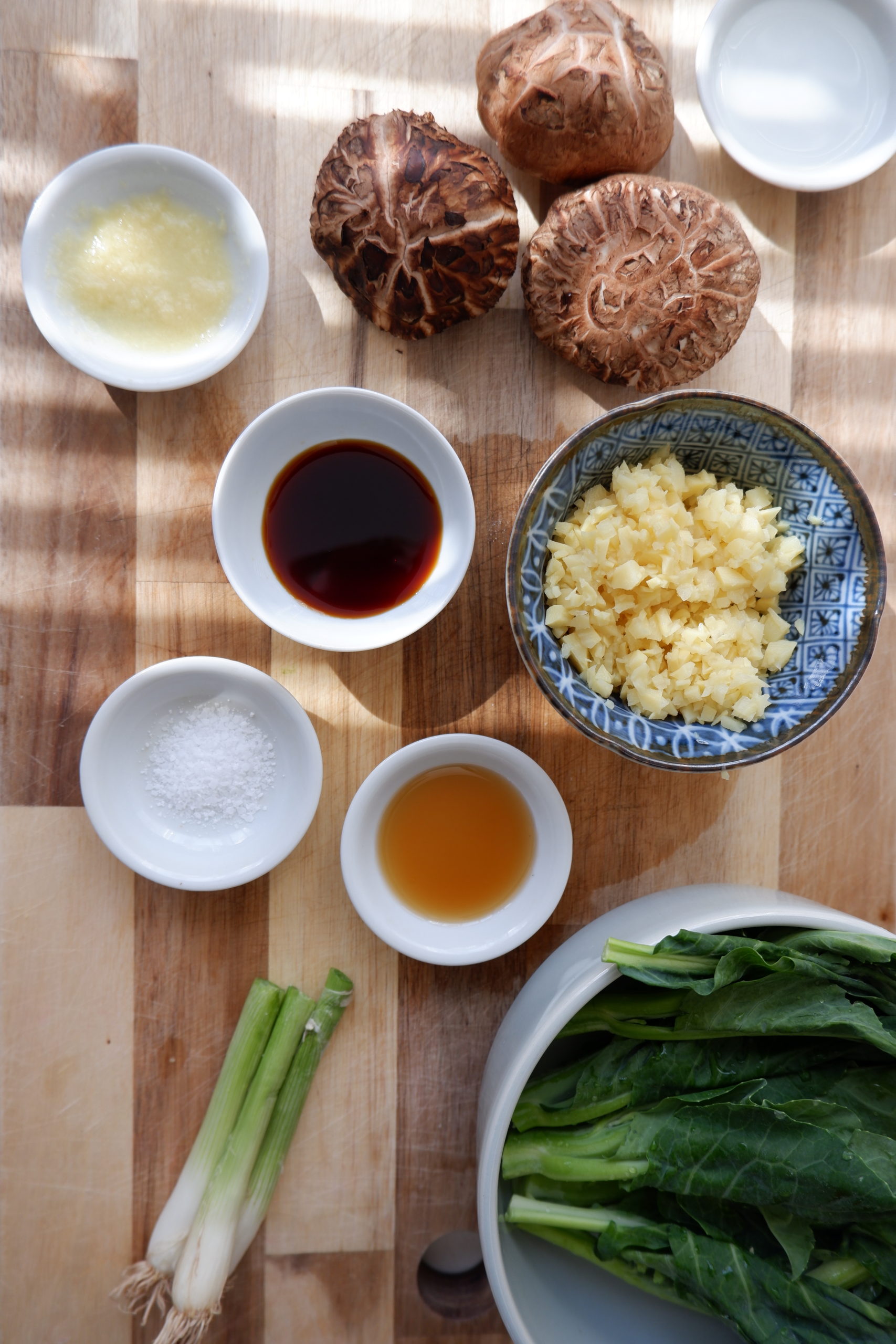
Directions:
1. Measure out warm water and add yeast and sugar, stir and let sit for 5 minutes, until frothing. Place flour in a large mixing bowl, add yeast mixture and stir until chunks begin to form. Once mixture starts getting too sticky, start using your hands to knead until dough starts to form, about 5 minutes. Keep kneading for 5-8 minutes, letting it rest for a few minutes in between. Alternatively, this can all be done in a stand mixer with the hook attachment. Place dough in mixing bowl, cover with a dish towel and let rest until doubled in size, about 1-2 hours. You will know it’s ready when you poke the middle with your finger and the hole doesn’t close back up.
2. Meanwhile, place pork in a medium mixing bowl and add rice wine, sesame oil, soy sauce, white pepper and ginger. Mix well, add some salt, then add all of the vegetables and mix well again. Cover and place in refrigerator (this will help it harden so it’s easier to scoop later).
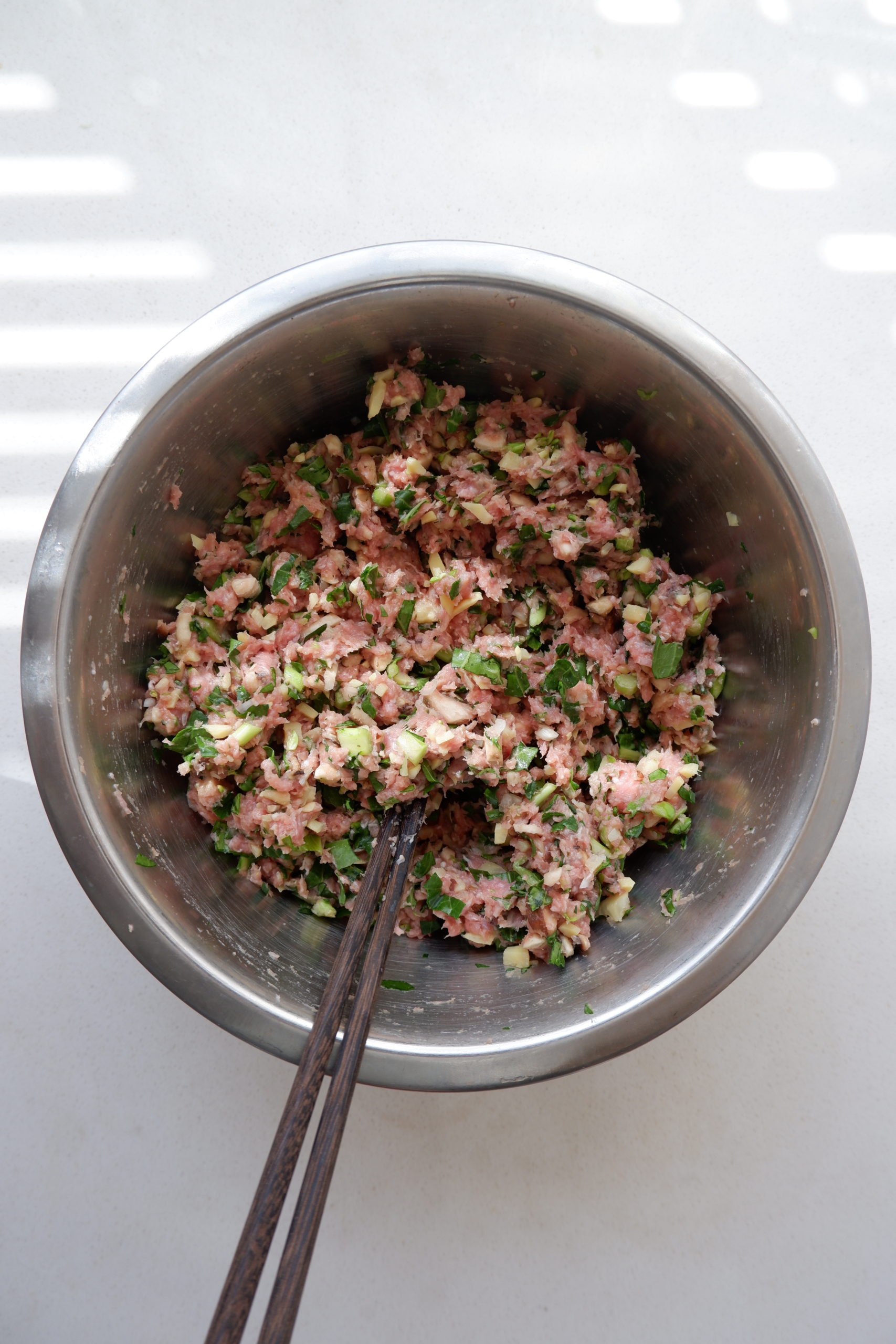
3. Place dough on clean chopping board or work surface and begin to form into a snake shape while pressing air bubbles out. This is achieved through alternately rolling and squeezing the dough with both hands. Once the air bubbles are out, fold the dough 2-3 times and roll back out into a snake – don’t worry about measurements because you will be weighing each portion.
4. Using a food scale, break the dough into ~50g balls. If you don’t have a scale, that’s okay, try to eyeball it – your buns just may not turn out the same size. Now you’re ready to fold!
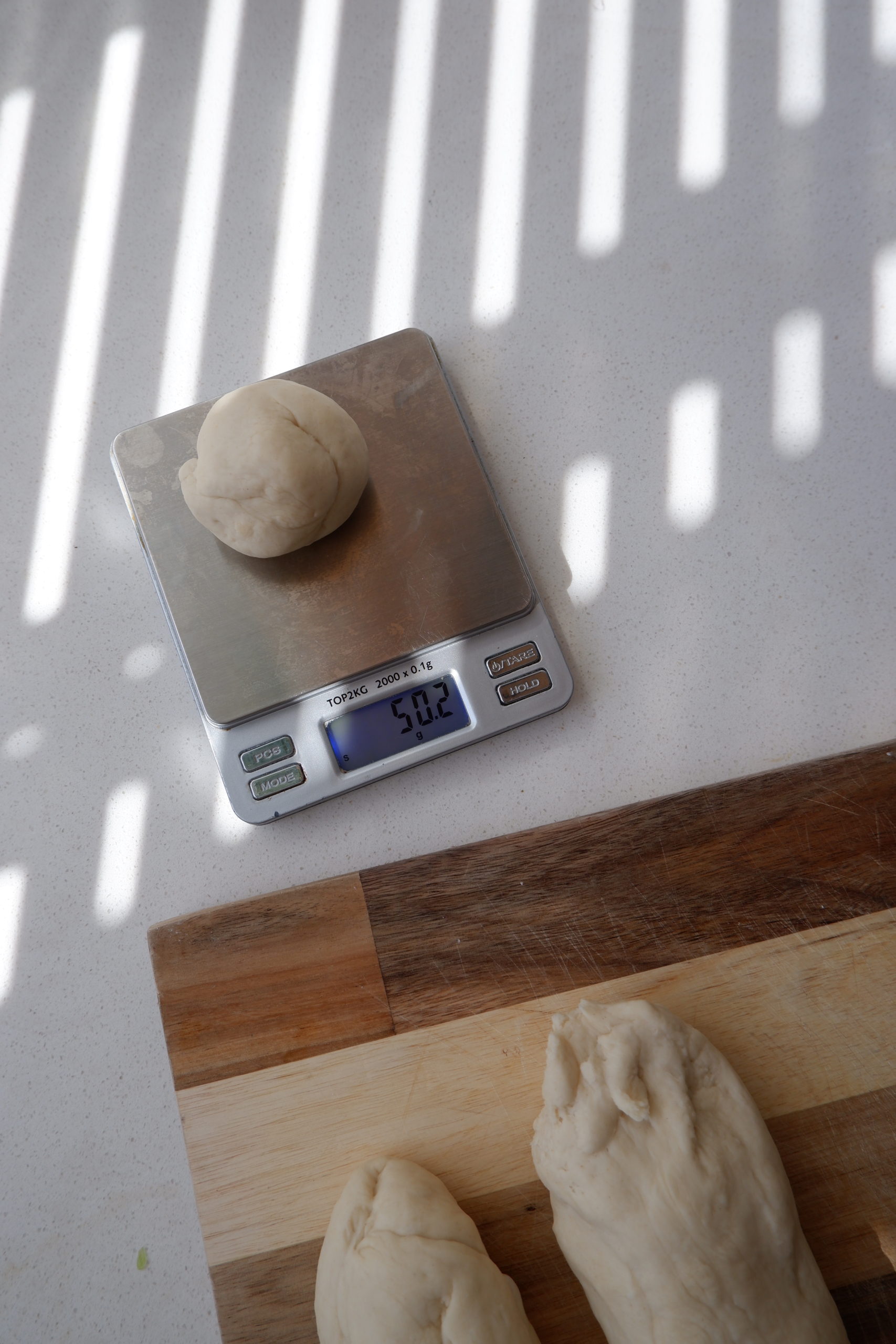
5. Grab one of the dough balls and massage a few times in between your hands to form a more perfect ball shape, and then place the dough ball onto your work surface. Using the rolling pin, roll over the dough ball a few times, turning it about 90 degrees each time, doing your best to keep it in a circle shape. Once it’s about 3 inches wide, start rolling and turning the same way, except only roll out from about halfway from the center; in other words, try to keep the center thicker and edges thinner, this will help keep a sturdy bottom to prevent the filling soaking through during cooking. Now you have one wrapper!
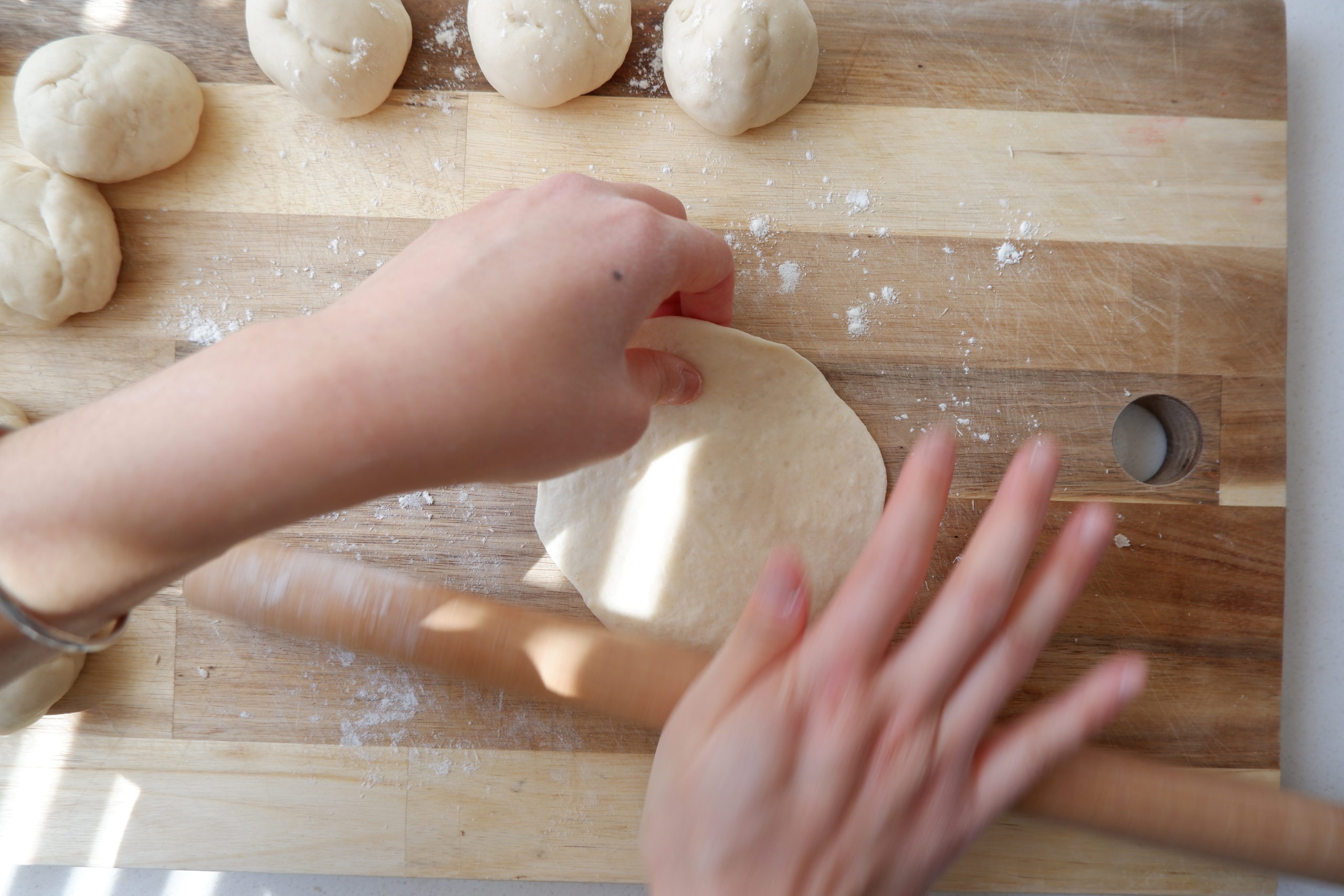
6. Using a spoon, scoop about a golf ball-sized amount of filling and place it onto the center of the wrapper. Use the spoon to mold a half-sphere shape. Time to close it off!
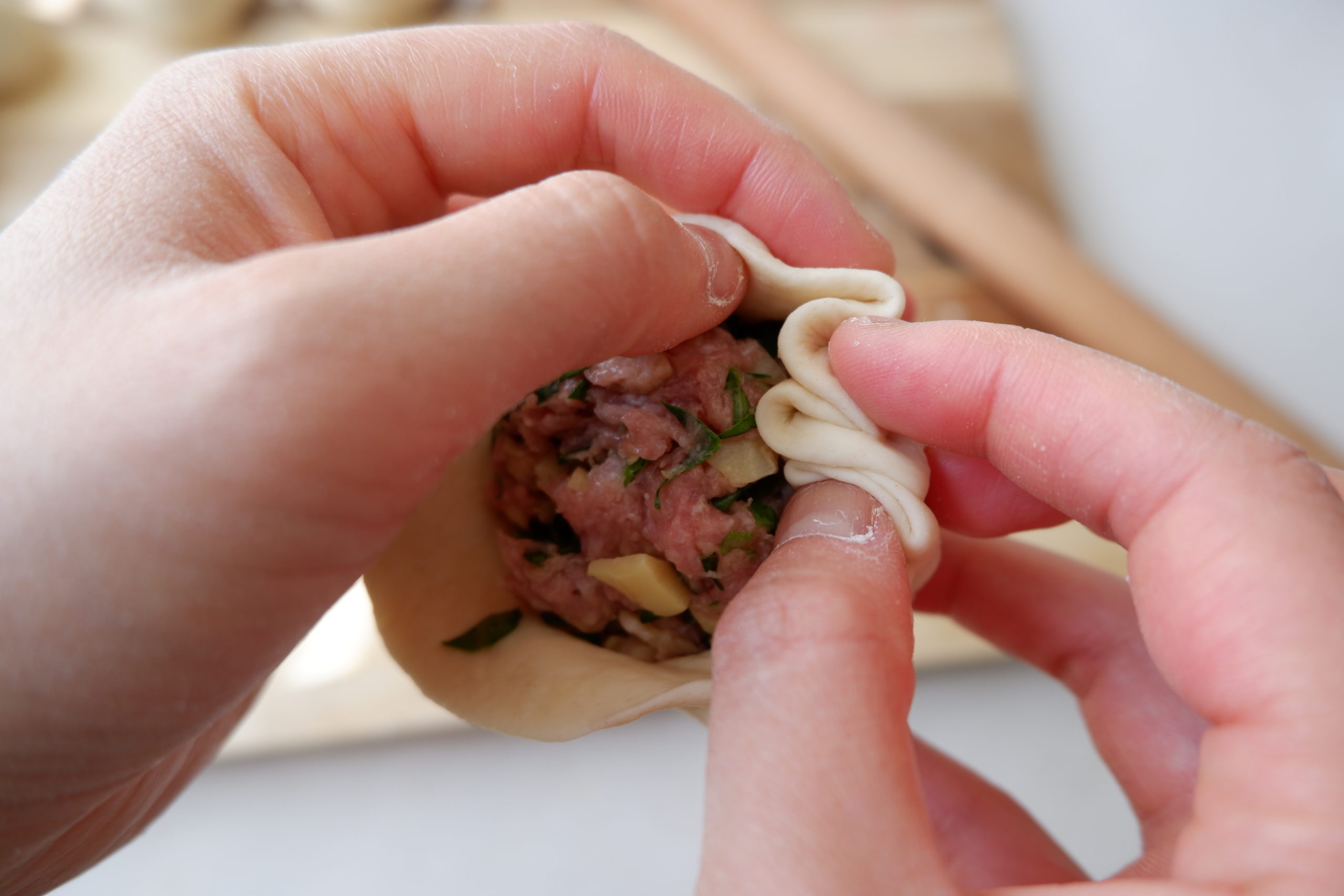
7. Grab two edges of the wrapper and create a “U” shape, using your pointer finger to make the “U” shape deeper and closer to the filling. Continue doing this and forming pleats about ¼ inch in width each. Go all the way around the filling, pressing the filling down if it starts to poke out. You can leave a “belly button” in the middle or keep pleating all the way around until it closes up. You’ve just made one bao zi! Put aside on a parchment paper-lined tray. Do the same for the rest of your wrappers.
8. Line your steamer with parchment paper or liner of choice. Add 1 quart of water to a large stockpot. Place 3 buns into bamboo steamer (or however many fit with ½ inch of space around them). Place steamer into pot and turn heat to high until it boils, then down to medium-low to maintain a simmer. Steam for 10 minutes, remove from heat and serve with dipping sauce and/or entrees of choice. Store in the refrigerator for 1 week or freeze for 1 month. To reheat, simply steam them again.
